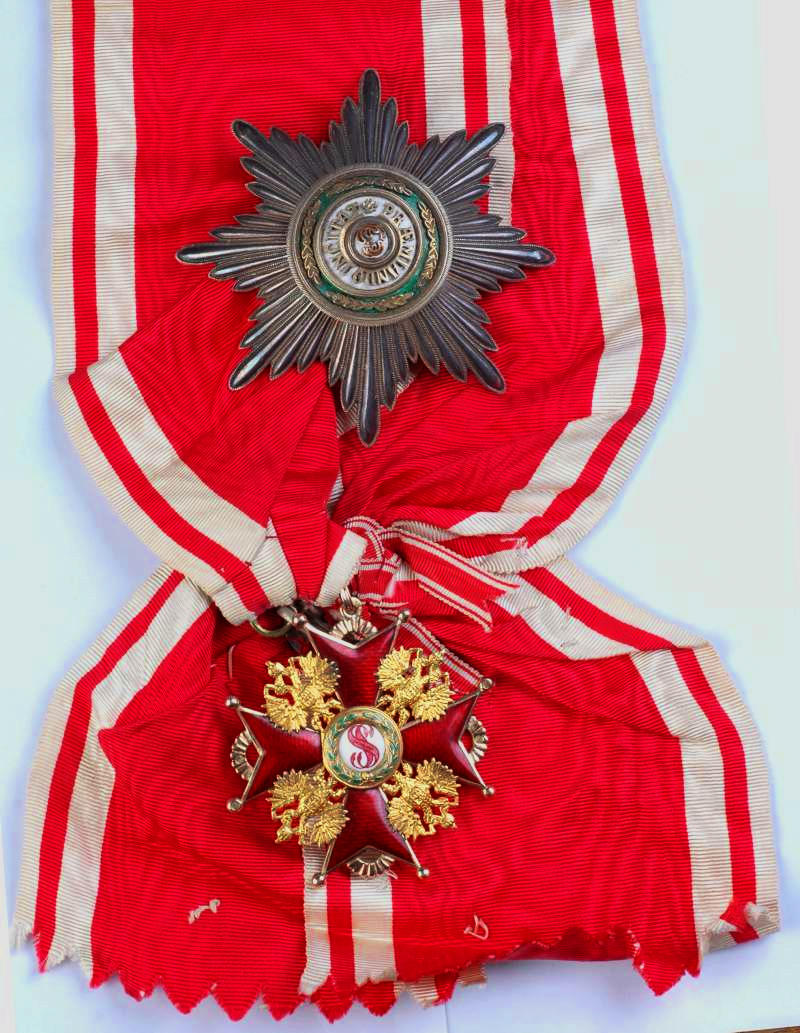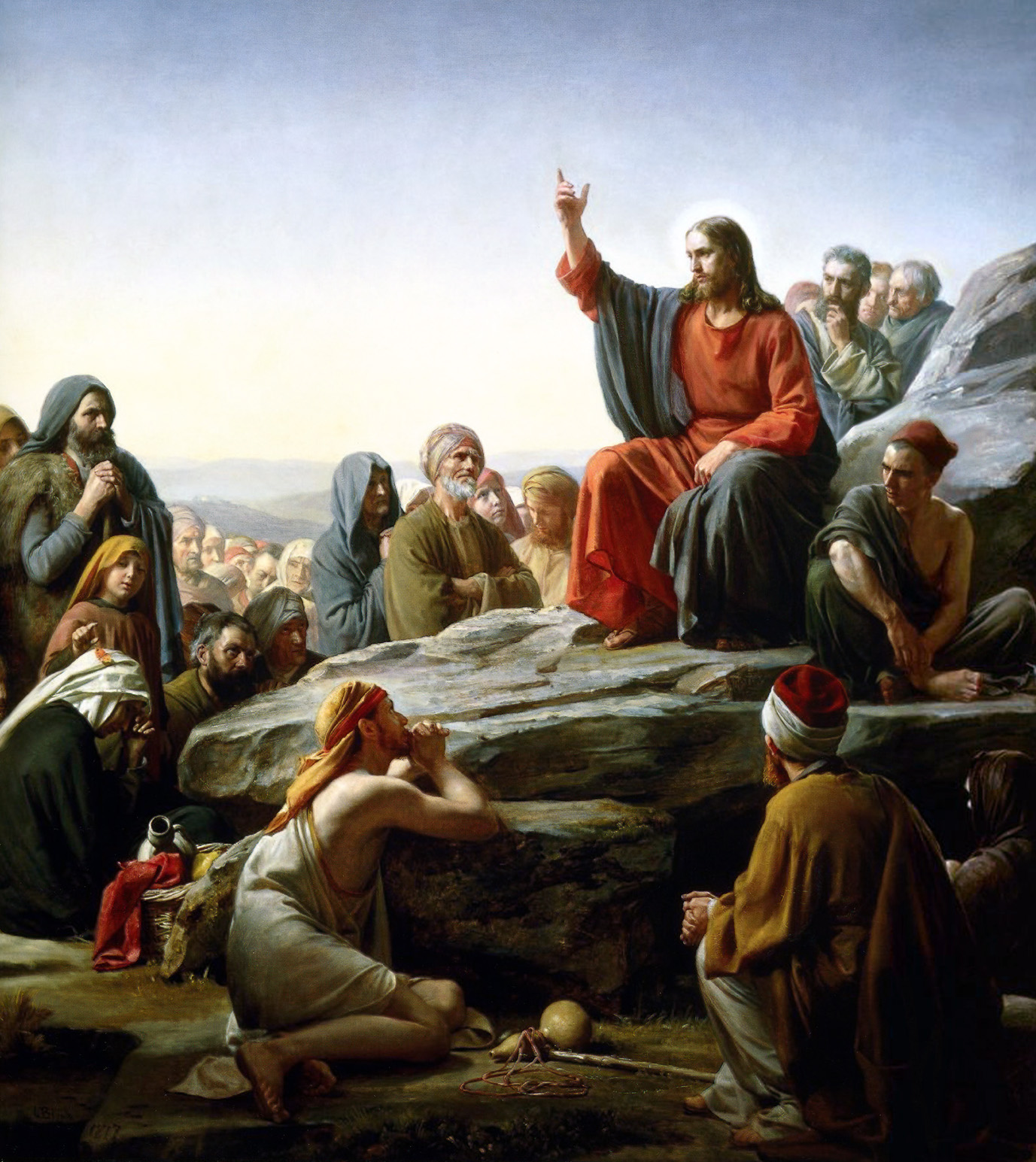|
Ignacy Hołowiński
Ignacy Hołowiński (writing under the pennames Ignacy Kefaliński and Żegota Kostrowiec; 24 September 1807 – 19 October 1855) was a Catholic archbishop of the Archdiocese of Mohilev, writer, translator, and literary critic. Hołowiński previously served as coadjutor bishop of the Archdiocese of Mohilev and titular bishop of Carystus from 1848 to 1851. He has been cited as the first person to translate a number of William Shakespeare's works into the Polish language. Biography Early life and clerical career Hołowiński was born on 24 September 1807 in Ovruch to Piotr and Dominika Hołowiński; he was baptized on 25 September. Between 1819 and 1825, he attended a gymnasium at Velyki Mezhyrichi, graduating with honors. On 29 September 1825, he began attending the diocesan seminary in Lutsk. He transferred to the University of Vilnius in January 1827, where he received a magister degree in theology in September 1830. He was ordained a priest on 25 September 1830 in Lutsk ... [...More Info...] [...Related Items...] OR: [Wikipedia] [Google] [Baidu] |
Roman Catholic Archdiocese Of Mohilev
The Archdiocese of Mohilev (or Mogilev or Mahilyow) was a territorial Latin Church ecclesiastical jurisdiction of the Catholic Church, covering the greater part of the territory of the Tsarist Russian Empire (from St Petersburg to Vladivostock). The Cathedral was the Church of the Assumption of the Virgin and St. Stanislav in Mohilev, the co-cathedral was the Cathedral of the Assumption of the Blessed Virgin Mary in Saint Petersburg. Its effective see was the imperial capital city Saint Petersburg. Throughout its entire existence, it was the largest territorial unit of the Catholic Church in the world. The archdiocese remained the Latin metropolitan see for Russia throughout imperial times and the Soviet period, although for much of the latter period it was the subject of repression and had no incumbent archbishop. History The establishment of a bishopric became a necessity as a result of the First Partition of Poland, when significant amounts of territory inhabited by Cathol ... [...More Info...] [...Related Items...] OR: [Wikipedia] [Google] [Baidu] |
Magister Degree
A magister degree (also magistar, female form: magistra; from , "teacher") is an academic degree used in various systems of higher education. The magister degree arose in medieval universities in Europe and was originally equal to the doctorate; while the doctorate was originally conferred in theology, law and medicine, the magister degree was usually conferred in the liberal arts, broadly known as "philosophy" in continental Europe, which encompassed all other academic subjects. In some countries, the title has retained this original meaning until the modern age, while in other countries, magister has become the title of a lower degree, in some cases parallel with a master's degree (whose name is cognate). Argentina In Argentina, the Master of Science or Magister (''Mg'', ''Ma'', ''Mag'', ''MSc'') is a postgraduate degree of two to four years of duration by depending on each university's statutes. The admission to a Master program () in an Argentine University requires the full ... [...More Info...] [...Related Items...] OR: [Wikipedia] [Google] [Baidu] |
Macbeth
''The Tragedy of Macbeth'', often shortened to ''Macbeth'' (), is a tragedy by William Shakespeare, estimated to have been first performed in 1606. It dramatises the physically violent and damaging psychological effects of political ambitions and power. It was first published in the Folio of 1623, possibly from a prompt book, and is Shakespeare's shortest tragedy. Scholars believe ''Macbeth'', of all the plays that Shakespeare wrote during the reign of King James I, contains the most allusions to James, patron of Shakespeare's acting company. In the play, a brave Scottish general named Macbeth receives a prophecy from a trio of witches that one day he will become King of Scotland. Consumed by ambition and spurred to violence by his wife, Macbeth murders the king and takes the Scottish throne for himself. Then, racked with guilt and paranoia, he commits further violent murders to protect himself from enmity and suspicion, soon becoming a tyrannical ruler. The bloo ... [...More Info...] [...Related Items...] OR: [Wikipedia] [Google] [Baidu] |
A Midsummer's Night Dream
''A Midsummer Night's Dream'' is a Comedy (drama), comedy play written by William Shakespeare in about 1595 or 1596. The play is set in Athens, and consists of several subplots that revolve around the marriage of Theseus and Hippolyta. One subplot involves a conflict among four Athenian lovers. Another follows a group of six amateur actors rehearsing the play which they are to perform before the wedding. Both groups find themselves in a forest inhabited by fairies who manipulate the humans and are engaged in their own domestic intrigue. ''A Midsummer Night's Dream'' is one of Shakespeare's most popular and widely performed plays. Characters The Athenians: * Theseus – Duke of Athens * Hippolyta – Queen of the Amazons and Theseus' fianceé * Hermia – in love with Lysander * Helena (A Midsummer Night's Dream), Helena – in love with Demetrius * Lysander (A Midsummer Night's Dream), Lysander – in love with Hermia * Demetrius (A Midsummer Night's Dream), Demetrius – s ... [...More Info...] [...Related Items...] OR: [Wikipedia] [Google] [Baidu] |
Romeo And Juliet
''The Tragedy of Romeo and Juliet'', often shortened to ''Romeo and Juliet'', is a Shakespearean tragedy, tragedy written by William Shakespeare about the romance between two young Italians from feuding families. It was among Shakespeare's most popular plays during his lifetime and, along with ''Hamlet'', is one of his most frequently performed. Today, the Title character, title characters are regarded as Archetype, archetypal young lovers. ''Romeo and Juliet'' belongs to a tradition of tragic Romance (love), romances stretching back to Ancient history, antiquity. The plot is based on an Italian tale written by Matteo Bandello, translated into verse as ''The Tragical History of Romeus and Juliet'' by Arthur Brooke (poet), Arthur Brooke in 1562, and retold in prose in ''Palace of Pleasure'' by William Painter (author), William Painter in 1567. Shakespeare borrowed heavily from both but expanded the plot by developing a number of supporting characters, in particular Mercutio a ... [...More Info...] [...Related Items...] OR: [Wikipedia] [Google] [Baidu] |
Hamlet
''The Tragedy of Hamlet, Prince of Denmark'', often shortened to ''Hamlet'' (), is a Shakespearean tragedy, tragedy written by William Shakespeare sometime between 1599 and 1601. It is Shakespeare's longest play. Set in Denmark, the play (theatre), play depicts Prince Hamlet and his attempts to exact revenge against his uncle, King Claudius, Claudius, who has murdered Ghost (Hamlet), Hamlet's father in order to seize his throne and marry Gertrude (Hamlet), Hamlet's mother. ''Hamlet'' is considered among the "most powerful and influential tragedies in the English language", with a story capable of "seemingly endless retelling and adaptation by others." It is widely considered one of the greatest plays of all time. Three different early versions of the play are extant: the Hamlet Q1, First Quarto (Q1, 1603); the Second Quarto (Q2, 1604); and the First Folio (F1, 1623). Each version includes lines and passages missing from the others. Many works have been pointed to as possible s ... [...More Info...] [...Related Items...] OR: [Wikipedia] [Google] [Baidu] |
Vilnius
Vilnius ( , ) is the capital of and List of cities in Lithuania#Cities, largest city in Lithuania and the List of cities in the Baltic states by population, most-populous city in the Baltic states. The city's estimated January 2025 population was 607,667, and the Vilnius urban area (which extends beyond the city limits) has an estimated population of 747,864. Vilnius is notable for the architecture of its Vilnius Old Town, Old Town, considered one of Europe's largest and best-preserved old towns. The city was declared a World Heritage Site, UNESCO World Heritage Site in 1994. The architectural style known as Vilnian Baroque is named after the city, which is farthest to the east among Baroque architecture, Baroque cities and the largest such city north of the Alps. The city was noted for its #Demographics, multicultural population during the Polish–Lithuanian Commonwealth, with contemporary sources comparing it to Babylon. Before World War II and The Holocaust in Lithuania, th ... [...More Info...] [...Related Items...] OR: [Wikipedia] [Google] [Baidu] |
University Of Victoria
The University of Victoria (UVic) is a public research university located in the municipalities of Oak Bay, British Columbia, Oak Bay and Saanich, British Columbia, Canada. Established in 1903 as Victoria College, British Columbia, Victoria College, the institution was initially an affiliated college of McGill University until 1915. From 1921 to 1963, it functioned as an affiliate of the University of British Columbia. In 1963, the institution was reorganized into an independent university. History The University of Victoria is the oldest post-secondary institution in British Columbia. First established in 1903 as Victoria College, an affiliated college of McGill University, it gained full autonomy and degree-granting status through a charter on July 1, 1963. Between 1903 and 1915, Victoria College offered first- and second-year McGill courses in the arts and sciences. Administered locally by the Victoria School Board, the college was an adjunct to Victoria High School (British ... [...More Info...] [...Related Items...] OR: [Wikipedia] [Google] [Baidu] |
Order Of Saint Anna
The Imperial Order of Saint Anna (; also "Order of Saint Anne" or "Order of Saint Ann") was a Holstein ducal and then Russian imperial order of chivalry. It was established by Karl Friedrich, Duke of Holstein-Gottorp, on 14 February 1735, in honour of his wife Anna Petrovna, daughter of Peter the Great of Russia. Originally, the Order of Saint Anna was a dynastic order of knighthood; but between 1797 and 1917 it had dual status as a dynastic order and as a state order. The Order of St. Anna continued to be awarded after the revolution by Grand Duke Kirill Vladimirovich, Grand Duke Vladimir Kirillovich, and Grand Duchess Maria Vladimirovna. Today, the Russian Imperial Order of St. Anna, awarded by Grand Duchess Maria Vladimirovna is recognized as an order of chivalry by the privately operated ICOC as a continuation of the pre-Revolutionary order, and has been approved for wear with military uniform by the Russian Federation, but not by some members of the Romanov Family Association ... [...More Info...] [...Related Items...] OR: [Wikipedia] [Google] [Baidu] |
Order Of Saint Stanislaus (House Of Romanov)
The Imperial Order of Saint Stanislaus (; ), also spelled Stanislas or Stanislav, is a Russian dynastic order of knighthood founded as '' Order of the Knights of Saint Stanislaus, Bishop and Martyr'' in 1765 by King Stanisław II Augustus of the Polish–Lithuanian Commonwealth. In 1831 after the downfall of the November Uprising, the order was incorporated into the Chapter of Russian Orders as part of the honours system of the Russian Empire by Emperor Nicholas I of Russia. In 1839, the Russian Order of Saint Stanislaus received new statutes, including granting status of nobility on its recipients in all three classes. As a result of the Russian Revolution 1917, activities were suspended by the Soviet Union, although it has since been awarded by the head of the Imperial House of Romanov as a dynastic order. When in 1918 Poland regained its independence as the Second Polish Republic, a Polish order was introduced as a successor to the Polish Order of Saint Stanislaus, the Orde ... [...More Info...] [...Related Items...] OR: [Wikipedia] [Google] [Baidu] |
Homiletics
In religious studies, homiletics ( ''homilētikós'', from ''homilos'', "assembled crowd, throng") is the application of the general principles of rhetoric to the specific art of public preaching. One who practices or studies homiletics may be called a ''homilist'', or more simply, a ''preacher''. Explanation Homiletics, the art of preaching, studies both the composition and the delivery of religious discourses. It includes all forms of preaching, including sermons, homilies and catechetical instruction. Homiletics may be further defined as the study of the analysis, classification, preparation, composition, and delivery of sermons. The formation of the Lyman Beecher course at Yale University resulted in an increased emphasis on homiletics. The published volumes of this series include information regarding the history and practice of the discipline. Branch of pastoral theology The ''Catholic Encyclopedia'' defines homiletics as "that branch of rhetoric that treats of t ... [...More Info...] [...Related Items...] OR: [Wikipedia] [Google] [Baidu] |
Saint Petersburg Roman Catholic Theological Academy
The Imperial Roman Catholic Theological Academy () was an institution of higher education preparing Roman Catholic theologians in the Russian Empire. The academy granted master's and doctorate degrees in theology and was designed to prepare clergy for senior positions in the Catholic Church hierarchy. It originated at the Vilnius University, but was transferred to Saint Petersburg in the aftermath of the Uprising of 1831. The Tsarist authorities wanted to exercise greater control over the academy and implement Russification policies. After the October Revolution in 1917, the academy was moved to Poland where it became the Catholic University of Lublin. A new theological seminary was established in Moscow in 1993; it moved to the premises of the historical Saint Petersburg Academy in 1995. In Vilnius The academy traced its roots to the Supreme Theological Seminary of Vilnius University established in 1803–1808 in the Augustine monastery. After the Uprising of 1831, the university ... [...More Info...] [...Related Items...] OR: [Wikipedia] [Google] [Baidu] |










